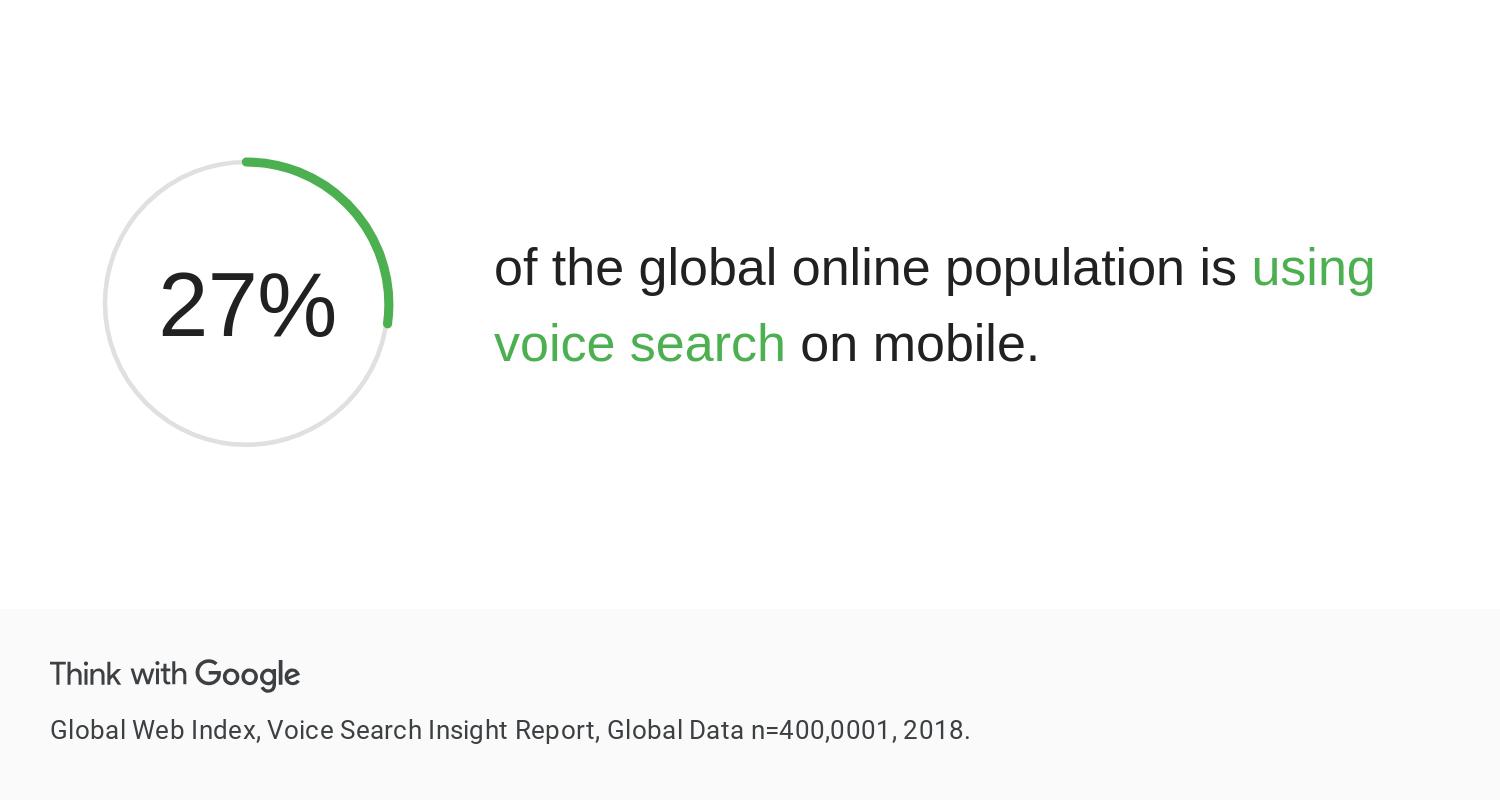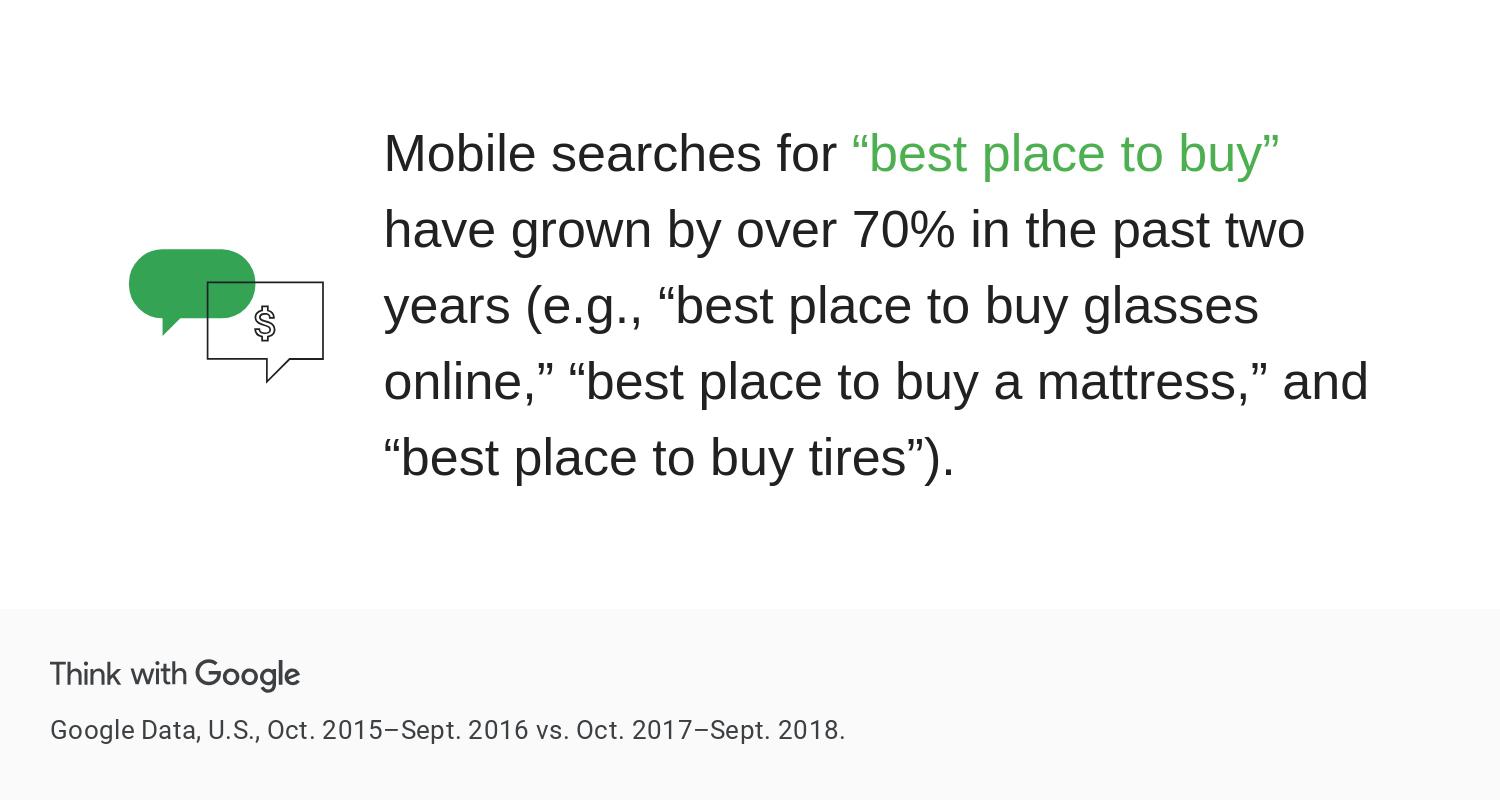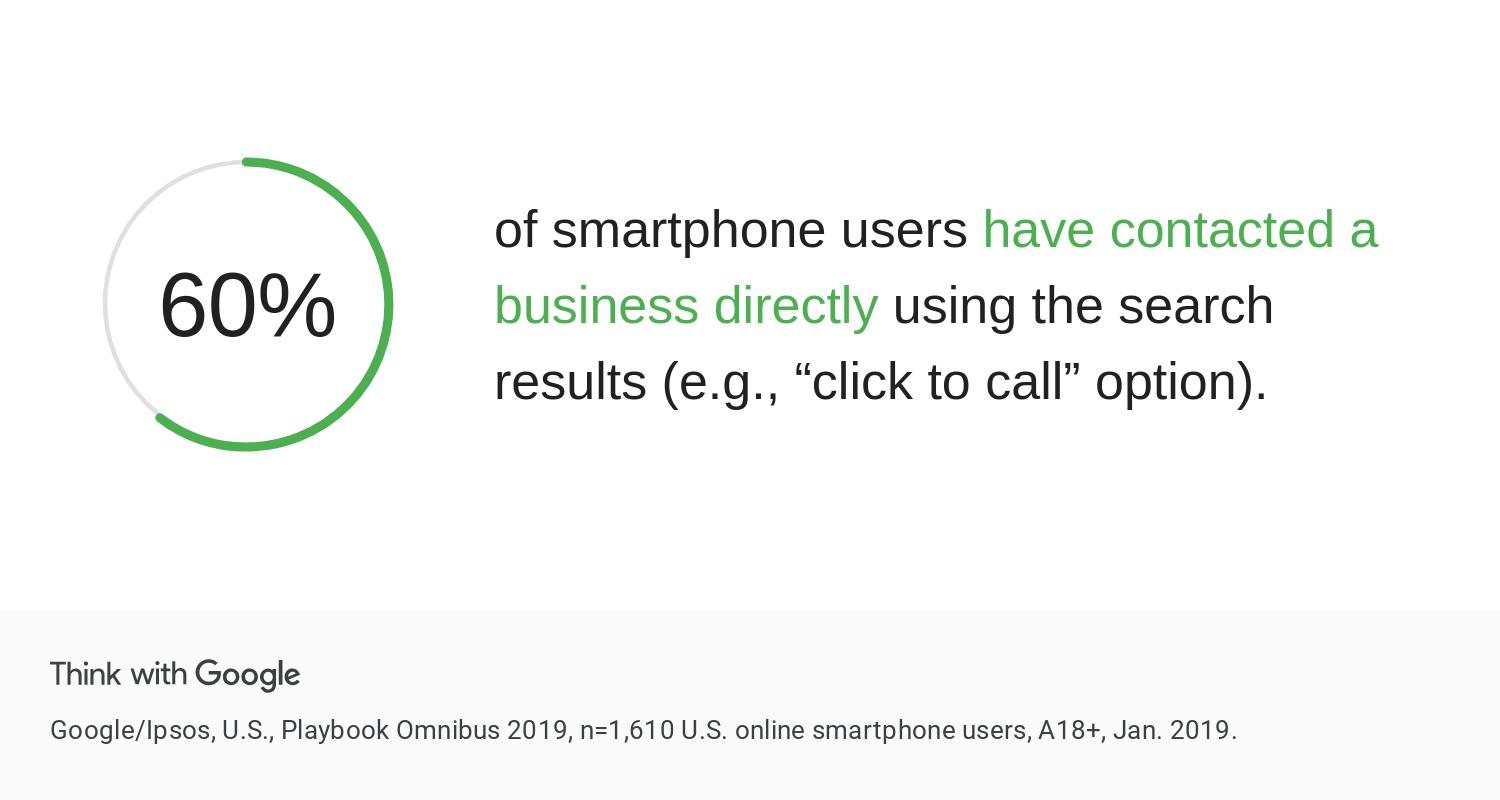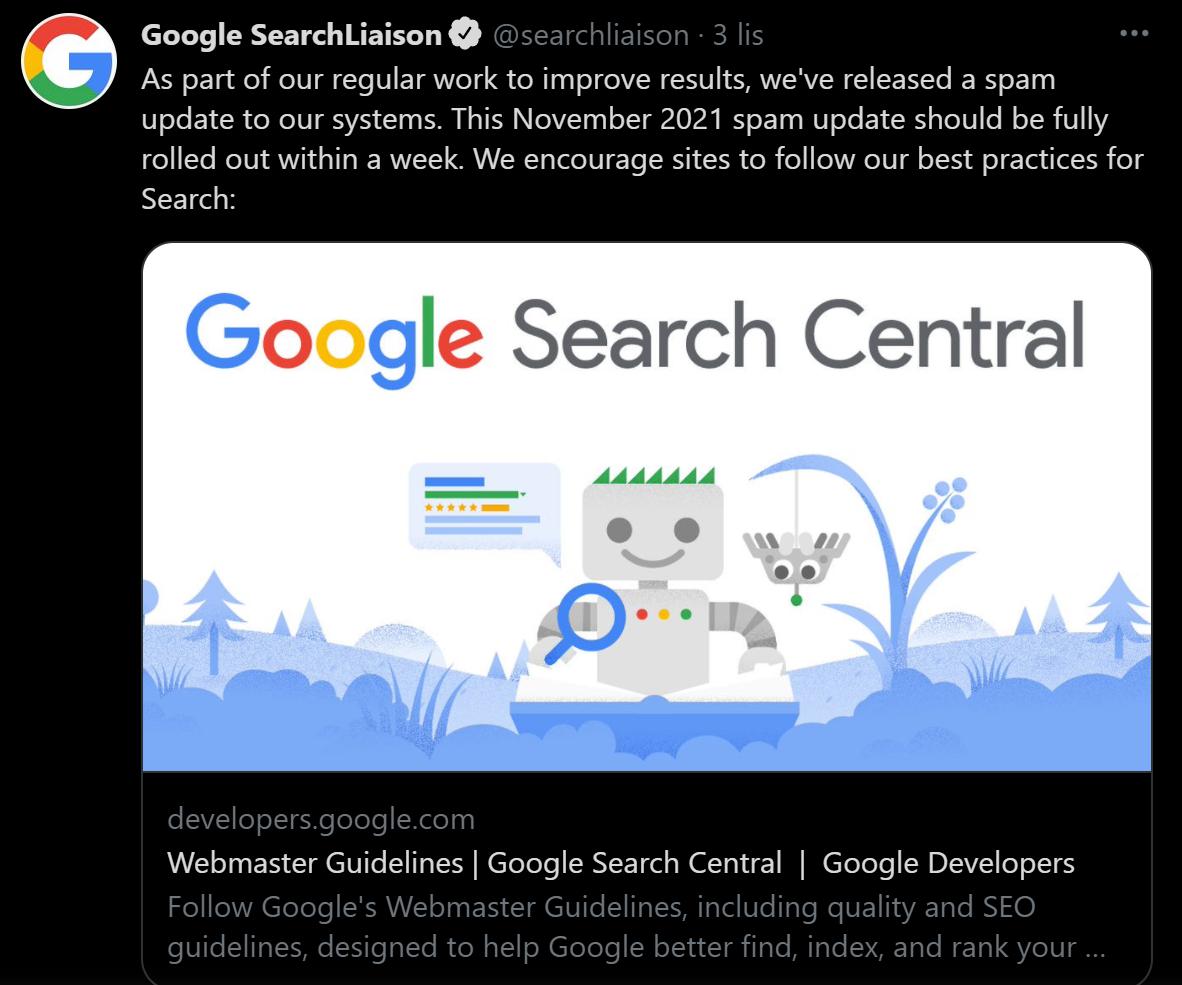Some experts say that off-page SEO is just another buzzword. A trendy term that is cool to talk about, but at the end of the day, there is nothing to pay too much attention to. I believe the opposite is true. Off-page SEO is an insanely important part of an overall SEO strategy, mainly including, but not limited to, linkbuilding. In order to better understand what off-page SEO really is and how to translate it into concrete actions, let’s start by drawing a slightly broader picture.
Marketing life is moments
.
Everything we do has changed. Our habits and daily life are not what they used to be. The ubiquitous access to technology and its constant development allow us to keep all the necessary information always at hand. Whether you’re standing in line at the market or in traffic on the highway, you can get back to the information you’re looking for with one click.
The thirst for knowledge behind the average Internet user has led to many businesses being able to flourish. Knowledge of user search behavior, as measured by the number and type of queries (as well as their intent), has become the foundation for raising funds for further development.
The search engine itself is not stopping – it is constantly developing its capabilities, offering new ways to search for data. On the one hand, we have the classic click on the computer/phone, and on the other hand, the availability of Voice Search.

That’s not the end of the interesting news – the same report on the ThinkWithGoogle website states that more than 60% of users choose to use the option to contact a business directly on the search engine, and queries about the best places to shop/do something have increased by nearly 70%.


This is not the end of the revolution – Vertical Search in Google
.
There are many studies on the Internet that make you aware of the great contribution to building your image and customer base by being present in specialized business aggregators (including ones like yours). Any ranking of online stores, insurance comparison sites or directories of doctors and specialists in general is Google’s answer to users’ needs. After all, the idea of search in search is closer to Kowalski’s needs than another list of the 10 best-positioned pear and parsley retailers online.
It’s about taking advantage of just such opportunities and such sources that is off-page SEO.
.
Off-page SEO – definition of the issue
.
Off-page SEO is about taking advantage of opportunities and optimizing the sources you use to promote and position yourself, your website or business overall. This definition captures well the amount of work we have to do in the changing world of search engine moments.
During many conversations with SEO specialists in Poland, I often hear that “off-page SEO is just another buzzword created to entice clients for linkbuilding and SEO audits.” But is it really?”
For me, off-page SEO is more than working on the next project. Rather, it’s about looking for link acquisition opportunities, but more importantly, optimizing link sources in such a way that, overall, allows you to occupy the maximum amount of search engine space (and more) – sources that work to the benefit of brand awareness and expertise.
Behind the rationale behind such actions is psychology, specifically the pure exposure effect. This is a phenomenon that assumes that our attitude toward an object changes with the frequency of the number of contacts with it. The issue of interest is that there is no need for conscious recognition of the stimulus.
This is why it makes sense to be wherever your customers, readers, users and fans may be – at every stage of contact with them in search and pages that “shine high” we should aim to optimize and garner as much free space as possible.
.
Off-page SEO vs On-page SEO
.
They say the world is not ready for Poles, but it’s not only in Poland that we like to fall from one extreme to another. Many people say that “linkbuilding is dead, long live content” or “why do you need content and on-page SEO when you can push everything with links?”.
This kind of thinking is dangerous, because it leads to bad allocation of advertising budgets in activities that do not translate into growth.
It is worth thinking about on-page and off-page SEO activities in terms of synergies. Since the main goal of off-page SEO is to take up additional search engine space using third parties and at the same time acquire a link to the site, it means that we will have the power that we need to properly “distribute” to the target site – that is, take care of its on-page SEO.
On the other hand, as I’ll show later in the article, a basic knowledge of on-page SEO comes in handy in the process of off-page SEO – if only in terms of filling in content gaps, internal linking or minimizing the potential for cannibalization.
.
Off-page SEO is linkbuilding on steroids
.
As I mentioned earlier, one of the elements of the off-page SEO process is not only optimizing third-party content (or looking for places where such content can be published), but first and foremost obtaining a positioning link to our business’s page. This process simply implies more than blindly acquiring links from places where our competitors are.
Important: Do such actions translate into greater link value?
.

More important than how optimized the content is on the site where you publish the article, is its physical embedding in the structure of the site. This means that over time, links that disappear from the structure or are embedded “at the very end” simply gain less value to pass on.
Do off-page SEO and SXO have anything in common?
.
Yes. I think the natural direction of evolution in the search engine and in the work of SEO specialists will be to abandon the classic division between on-page and off-page SEO, and instead focus our attention on SXO, or Search Experience Optimization. This is an inevitable change, as it is less and less about generating more and more traffic and more about taking advantage of every opportunity that comes along to gain the attention and interest of a potential customer.
What has changed at Google in terms of links?
.
A conversation about off-page SEO cannot go without a brief and factual outline of where we are and where we are going in linkbuilding. Especially since, as of the date of writing this article, we have two recent updates behind us regarding only and only links to a page.

And while Google has made us a little lazy about the topic of link quality, we must not forget that everything we do carries the risk of a penalty from Google. The search engine is a variable, so any activity we undertake may someday stand in opposition to changes in the rules – and thus be deemed unacceptable.
Why links are (and will be) so important?
.
Links are the foundation of the whole mechanism that is Page Rank. It is thanks to them that it is possible to build a network of dependencies, allowing to constantly expand and update the database of web pages in the results index. In addition, the value of each link presented numerically is a good way to sum up the “SEO power” of a page – which in the final analysis allows you to rank the search results in the top 10 search results.
Today, while we know that Page Rank is still in effect as an idea, we don’t have access to its numerical representation in the form of a changing tracking bar. In the past, it was a pretty nice way to measure whether links were cool or not, and any updates within the Page Rank indicator allowed us to quickly assess whether we were okay with our links.
Modernly, the role of links has diminished somewhat in light of the vast amount of data Google has access to, nevertheless, it’s still an important (and in many industries, the most effective) element in the fight for high rankings in search results.
Avoiding technicalities – links and the Page Rank algorithm that uses them are a key element in how Google’s robot searches, indexes and presents information. In short, if you want to keep your site indexed at a high level and crawl for new content, it is imperative that you take care or systematically acquire new links to your site.
In 2016, the image of links and linkbuilding has changed
.
I often say when discussing the link acquisition process that historically we have had several such changes in Google, which almost always represent a new deal, a cleanup in the index and the end/beginning of many businesses. One such change was Penguin – that is, the update that unveiled its first, still manual version on April 24, 2012. In the following years, it had its iterations, which gave opportunities (or took them away completely) to webmasters and SEO specialists.
However, the landmark update was the implementation of Real Time Penguin in 2016. Since then, the need to think about link quality was “officially” taken off the shoulders of SEO specialists. Google itself began to decide whether something would be helpful or not for our link profile.
Thus, as SEO specialists, we have lost the primary way to monitor the effectiveness of the links we acquire, as it turned out that the visibility/movement of a link does not quite mean its effectiveness in search results.
Important: From that point on, owners of their subject matter backlinks began to take an interest in the issue of testing the links they acquire. The process itself is heavily demanding and time-consuming – and as we know, time is almost always too little.
What does all this mean for us?
.
More work and more tolerance from clients. Although the activities of acquiring links to the site are still important, the results of the work come correspondingly later.This is why looking for opportunities such as off-page SEO allows us to better spend time while waiting for high positions.
Components of off-page SEO
.
Off-page SEO activities consist of three main areas that we should discuss in more detail. These are:
-
Content – which is the basis for building the value of each publication and the outbound link/directional link environment to our site.
- .
-
Links – especially in terms of their form, placement, and value-building on the external site.
-
Additional signals, not directly related to links – i.e., everything we do outside of link acquisition and external content publishing that can improve quality parameters and brand/page recognition on the web (and beyond).
Content under off-page SEO
.
There are many ways to get links to a site, but publishing articles with a link is by far the most popular and accessible to the general public form of getting links to a site. This is because both publishers and advertisers find common ground in such collaboration – the end result of which can (and should!) be value for customers and readers of the site.
When creating content to be used for off-page SEO, we need to focus first and foremost on its added value for site visitors and potential to build complementary organic traffic to our visibility. In a nutshell, it’s not just about the uniqueness of the content we create (which is a debatable issue in the Internet/SEO industry), but more importantly its usefulness and potential to build additional organic traffic for us.
Different types of content under off-page SEO
.
The starting point in the process related to the use of external resources is to separate groups of content to use. These can be not only specialized publications, community support or user manuals (if you are selling a device), but also any advertising and PR materials that also allow you to use the effect of pure exposure and “bombard” customers with our brand.
Typical content that off-page SEO uses are:
.
-
Blog/expert content – published externally, providing a pill of knowledge about the industry we’re in, where we share our knowledge with others – including potential customers.
- The content that off-page SEO uses is
-
PR releases, press releases, slogans and advertising content – this is probably one of the most popular and at the same time least used types of content “produced” by brands online. Many myths have grown up around PR/advertising content, including the myth of uniqueness. Meanwhile, publishing an advertising message that lets us know what we’re up to is the cheapest and fastest form of acquiring meaningful text links to our site.
-
Postings in industry advertising directories/specialist search engines – many of these allow you to acquire not only a link to your site, but also include contact information, information about your offerings or business hours, which are used by Google as part of local SEO efforts (their compliance).
- .
-
Any activity understood as whisper marketing – that is, finding and supporting your customers wherever they gather in groups to exchange knowledge about your product. An example of cool content that was not used at all in the past is, for example, the UPC forum. There, customers shared knowledge about technical problems and (unfortunately for the brand) information on how to effectively terminate a customer’s contract. Nowadays, many brands blindly outsource the acquisition of links to the site through whisper marketing, forgetting that this is a good opportunity for customer loyalty.
.
-
Republication of advertising materials in PDF form – uniqueness is not required, while many sites aggregate and forward the content further, allowing the acquisition of valuable links to the site.
-
All advertising instructions, product/service usage guideline – an effective way to be where the customer is.
-
Material in the form of video – it is worth remembering that YouTube is the second largest content search engine in the world. At the same time, Google has been pushing to maximize its share of organic results in recent years. So why not bite a piece of that pie for yourself? Especially since any topic beyond text or image representation can have a video representation.
.
.
Creating content for off-page SEO
.
Under the assumption that we want to generate topic coverage in the category we are targeting, it is necessary to plan the content in a way that will enable us to carry out this plan. What needs to be done is to describe what the content should be under external publications and what it should not be. It is crucial to consider:
-
Where will we publish the content in question?
-
How much similar/identical content is already on the site? Are we writing another article about pears and parsley, or is this our first approach to an issue within this service?
-
How much content is already on the site?
-
How do we want to position the content relative to our own domain optimization? Are we giving up the potential battle for a generic query, for which we currently position well, in favor of covering long tail queries?
-
.
-
Can I link not only to my domain, but also to other sources within the content I create?
-
Where I publish content will I be able to further reinforce it internally?
.
.
The very idea of creating content for off-page SEO uses the idea of so-called silos. On the one hand, we build topic silos in-house, and on the other hand, we encase the entire topic with services that allow us to cover exactly the topic we care about.
For example – when running a domain about transportation, I care not only about high rankings for the queries transport, varieties of transportation, transport vs. logistics, transport logistics, but also about topic coverage within other sites that allow publication. In an ideal scenario, my content should be on all services and create synergies with the content I have on my site.
Linkbuilding as part of off-page SEO
.
There is no good off-page SEO without meaningful links to the site. As I mentioned earlier, links are still an essential component of building trust with Google.
Link acquisition in the case of off-page SEO is an outgrowth of promotional efforts, not their goal. Interestingly, I observe a regularity whereby the less a brand thinks about quality links to a site, the more links it acquires. I don’t want to urge you here to stop link acquisition processes – however, it is worth going out and looking at your domain more broadly.
.
What should we do as part of linkbuilding in off-page SEO?
.
-
Be where your customers are – identify all the places where recipients of your product and service are likely to go and look for information.
-
Take care not only to publish the article itself with a link, but also to promote it additionally.
-
It’s not always about links, sometimes you also need mentions (which can be turned into links in the future) – conduct active internet monitoring for inquiries and mentions of your brand, but also for inquiries related to the problem you are solving. In this way, you will build yourself a space for acquiring links in the future.
-
Topic coverage first. The answer to the question of whether thematic coverage in a link profile is important is complex. However, when it comes to off-page SEO, it makes sense to maximize thematically related places to show up first. This way you build not only links, but also the recognition and branding of your project.
-
Are you out of themed sites? Build your own. The overriding rule for off-page SEO efforts is to have as many sites as possible whose content you can control. A well-thought-out strategy of building microsites/off-page SEO sites can, in the long run, allow you to maximize results coverage for the query you are interested in.
-
Sublinking first. Each of the links you acquire should further build SEO traffic. This means that in addition to optimized text, it’s also worth taking extra care to promote and link to your publication.
.
How to acquire links as part of off-page SEO?
.
-
Brand first and foremost. Your friend will be links from images that you place adjacent to content thematically related to your site. This way, you don’t always have to create content from scratch.
- .
-
Since the goal is to build branding and recognition, the link text (anchor text) will usually be branded or compound (linking brand and money keyword, e.g. SXO from Rogala.pro). This doesn’t mean you can’t go a little crazy and include links from the so-called exact match keyword, however, they shouldn’t dominate the entire anchor cloud.
-
Your clients are turning to large aggregators of companies in your industry? You need to be there. Unfortunately, most of these sites don’t pass on SEO power to the sites they aggregate, but you can use this to cover branding queries for your brand/your product.
- .
-
Do you have a digital product that can be disassembled? Great. Functional widgets are a great way to build links to your site in bulk. By creating easy to replicate and use solutions that are free, you can quickly increase the number of valuable links to your site.
-
You have an affiliate program? Fantastic. A well-thought-out strategy for working with your affiliates and a structured way of “sharing” affiliate links can allow you to gain additional SEO value for your domain.
-
Important: Think of every link you acquire as something of your own. That way, you’ll be thinking about how to maximize its reach and SEO value at every stage.
Important.
Additional signals – so-called qualitative ones – in off-page SEO
.
There is no conclusive evidence that paid search or social media have a warming effect on the value of off-page SEO efforts. Nevertheless, it’s worth looking at it more broadly according to the principle described earlier – every publication and every link, every mention of your brand is your brand asset – so wherever possible you should invest money in additional promotion – paid or organic. Remember that off-page SEO efforts are not only about SEO power, but more importantly about traffic, awareness and potential redirects to your landing page.7 basic steps in off-page SEO
.
Off-page SEO requires a synergy of what you have on your site with what you publish and show externally. This is a process that varies depending on what kind of business you are promoting. At a high level of generality, a typical process is:
.
-
Gathering data within the organization. What do you do, how do you do it, what values do you have, what products, what services, what problems do you solve, who have you worked with so far and how did that someone choose you. Knowing all of this allows you to create a plan to enable good distribution within your off-page SEO efforts.
.
-
Review your current content. Do they all match what you want to promote on the site? Is all the content working as expected? What about content that doesn’t work (doesn’t generate traffic to the site) – is it worth keeping it, or should we publish it, after revisions, elsewhere where it will fit better?”
.
-
Detailed keyword analysis, based on search intent. It’s not always worth covering 100% of all intent, but knowing what queries ultimately lead to conversions allows you to plan where and on what sites it’s worth appearing with your knowledge and links.
Here it’s worth mentioning that you don’t always have to reinvent the wheel – using Senuto, we can pull up competitor keywords and use it to plan content, as well as to find where your competitors are doing their business and appear there as well.
-
Decide what content you leave on your site and what you use for link acquisition. In the pursuit of content and visibility, we often forget that queries with informational intent do not necessarily mean that a customer will immediately decide to buy from you. Very often, after learning about general concepts, there is a return to the search results, a refinement of the query and only then a decision to buy/solve their problem. Therefore, it is worth considering where you want to be in the whole process.
.
Of course, covering general phrases makes sense when conducting paid search activities at the same time. A cookie base built in this way for remarketing can result in increased conversions in other channels, so it is worth taking this into account when planning overall promotional activities on the Internet. -
Analysis of TOP 3, TOP 10 and TOP 30 search results. Keyword knowledge allows us to analyze search results and select sites that occupy the top 10 search results for a given query. Can we appear there with our links? What kind of content can we upload?
.
First of all, we look for sites with which we can enter into cooperation. For many queries in any industry, aggregators or content sites show up, so we can use them for topic coverage as part of our off-page SEO efforts.Content gap analysis on selected sites – fill in the content holes on these sites by publishing valuable content that has a chance to rank in organic results. Also take care of proper sub-linking inside the site where you publish content.
-
Creating content. The overriding rule is to publish such posts that have the ability to build traffic for the queries they were written for.
- .
-
Set up internet monitoring and analyze the places where inquiries are made about your area of business. In some places it is possible to place not only the answer to the question asked, but also links directing to your site.
- .
.
Off-page SEO strategies for different types of sites
.
The Internet is diverse, and so are the websites that are created every day. And while the process itself remains the same there are a few things to consider depending on what you are promoting.Off-page SEO for an online store
.
-
Respond to the question of how much visibility you want on your site, and how much coverage is enough to only cover a set of phrases that lead directly to conversions. This decision affects the amount of costs associated with creating and managing your content.
.
-
Join with your offer to sites that allow you to promote discount codes. The bigger you have a store, the greater the chance that people will look for promo codes to use when shopping. At the same time, for the sake of synergy – create a dedicated discount code subpage in your online store as well.
.
-
Attach price comparison sites with your offer. If possible, upload your entire offer and take up additional advertising space.
-
.
-
Monitor inquiries about the products you sell. Show up wherever people have a problem with a product or are looking for the best one for them.
-
Monitor inquiries about products you sell.
-
If general/informational queries are not in your area of interest, but you want to acquire links – search for links from existing articles and place banner ads/images there to gain SEO value and potential clicks to your site.
.
-
-
Affiliation is your friend. Look for synergies with your affiliates by feeding them valuable content with a link to your site, and ensure good monitoring of acquired traffic for fair billing.
-
Affiliation is your friend.
Off-page SEO for local business
.
-
Promotion and off-page SEO for local business is, despite appearances, quite difficult. First of all, there are far fewer local sources, just as there is less potential for queries to be covered.
-
It is crucial to understand how intensively and how people search in your area. By doing a thorough keyword analysis and juxtaposing it with data in, for example, Keyword Planner Google Ads, we can glean oriented volumes of queries in your region. Why do we need such knowledge? Well, you may find that describing some content on your blog may make more sense when a penny of queries and users are generated by people logging on to the Internet in your area. This is how you naturally increase your chances of attracting a potential customer.
.
-
Local sites are your friends. It is mandatory to publish periodic posts there with a link to yourself and buy promotions on the homepage/related posts.
-
Local sites are your friends.
Many websites acquire links from local sites because of good SEO/quality performance. For you, this is an opportunity to buy additional regional promotion and get displayed only on such posts. -
Local classifieds sites – some of them allow you to add a link to your site. So naturally, not only do we garner potential traffic from search engine queries, but we also get links to the site.
- .
-
Linking from business directories. They don’t always convey SEO value, but they very often rank high in search results for local queries. It’s worthwhile to be on them with unique content and your own offerings to the site.
- .
-
Take advantage of the opportunities provided by Google My Business. Very often, local inquiries are just about figuring out where a business operates. In the Google My Business dashboard, you can communicate with your customers by adding short notes about what you do.
.
.
Off-page SEO for a blog
.
Blogs are written by everyone. Everyone wants to rake in a bit of organic traffic and turn it into value (and profits) for their site.
-
For these types of sites, the synergy of what you do on-site and off-site is crucial. If your blog serves as a source of leads for your service business, you should focus on listing all the problems you can solve or help with.
-
Do you work in a particular industry? Do you hold events and conferences in the industry? Be an active user of them, review them and publish these reviews on your site. Then you can do a subjective review of the best industry events and publish them on multiple sites at the same time (garnering valuable links to your site).
-
If your goal is to generate conversions in an affiliate program you are a member of, there are very slim chances that just your post will be plugged into the site of the company you are promoting – and you have to manage on your own. In this situation, it can be helpful to decipher all the problems that a particular product solves, so as to describe 100% of the possible uses of the product.
.
-
Share in comments and communities on well-read industry sites with information about where you are from. This way you can also gain free links to your site, but most importantly mentions that can generate additional interest in your site.
- .
Is it possible to do off-page SEO without your own site?
.
-
Yes! However, it is worth remembering that having your own website (even a very basic one – with a phone number and email) allows you to remain independent and minimizes the risk in a situation when a 3rd party source (such as Linkedin or Facebook) removes some functionality or (for example) our site.
-
If we decide that our means of communication with the world will be, for example, Linkedin – let’s take care to optimize it for the most popular queries from our category, so as to make it easier to search for our profile. If the goal is to build a customer base – remember to include on the profile all acceptable means of communication with each other.
.
-
All the rest of the promotion unchanged – appear where you can build a position as an expert.
.
.
 Łukasz Rogala
Łukasz Rogala